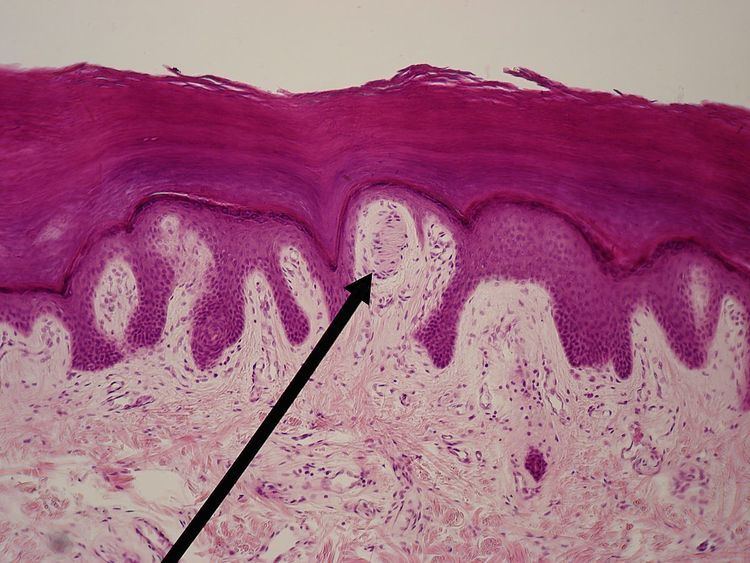 | ||
Similar Electron microscope , Magnification , Antonie van Leeuwenhoek | ||
A micrograph or photomicrograph is a photograph or digital image taken through a microscope or similar device to show a magnified image of an item. This is opposed to a macrographic image, which is at a scale that is visible to the naked eye. Micrography is the practice or art of using microscopes to make photographs.
Contents
- Photomicrograph
- Electron micrograph
- Digital micrography
- Magnification and micron bars
- Micrography as art
- References
A micrograph contains extensive details that form the features of a microstructure. A wealth of information can be obtained from a simple micrograph like behavior of the material under different conditions, the phases found in the system, failure analysis, grain size estimation, elemental analysis and so on.
The neuropathologist Solomon C. Fuller designed and created the first photomicrograph in 1900. Micrographs are widely used in all fields of Microscopy.
Photomicrograph
A light micrograph or photomicrograph is a micrograph prepared using an optical microscope, a process referred to as photomicroscopy. At a basic level, photomicroscopy may be performed simply by hooking up a regular camera to a microscope, thereby enabling the user to take photographs at reasonably high magnification.
Roman Vishniac was a pioneer in the field of photomicroscopy, specializing in the photography of living creatures in full motion. He also made major developments in light-interruption photography and color photomicroscopy.
Electron micrograph
An electron micrograph is a micrograph prepared using an electron microscope. However, the term electron micrograph is not used in electron microscopy. Common designation is a micrograph.
Digital micrography
Digital micrography is a digital picture obtained either directly with a microscope or by scanning of a photomicrograph. Digital micrographs are now commonly obtained using a USB microscope attached directly to a home computer or laptop.
Today, an add-on three-in-one macro lens which has capability to take wide-angle, fish-eye and macro with 7x, 14x and 21x Magnification can be attached on iPhone5/5s or 5th generation of iPod.
Magnification and micron bars
Micrographs usually have micron bars, or magnification ratios, or both.
Magnification is a ratio between size of object on a picture and its real size. Unfortunately, magnification is somewhat a misleading parameter. It depends on a final size of a printed picture, and therefore varies with variation in picture size. Editors of journals and magazines routinely resize a figure to fit the page, making any magnification number provided in the figure legend incorrect. A scale bar, or micron bar, is a bar of known length displayed on a picture. The bar can be used for measurements on a picture. When a picture is resized a bar is also resized. If a picture has a bar, the magnification can be easily calculated. Ideally, all pictures destined for publication/presentation should be supplied with a scale bar; the magnification ratio is optional. All but one (limestone) of the micrographs presented on this page do not have a micron bar; supplied magnification ratios are likely incorrect, as they were not calculated for pictures at the present size.
Micrography as art
The microscope has been mainly used for scientific discovery. It has also been linked to the arts since its invention in the 17th century. At first scientists used the microscope to view and draw objects not visible with the unaided eye. Early adopters of the microscope, such as Robert Hooke and Antonie van Leeuwenhoek, were excellent illustrators. After the invention of photography in the 1820s the microscope was later combined with the camera to take pictures instead of relying on an artistic rendering.
Since the early 1970s individuals have been using the microscope as an artistic instrument. Web sites and traveling art exhibits such as the Nikon Small World and Olympus Bioscapes have featured a range of images for the sole purpose of artistic enjoyment. Some collaborative groups, such as the Paper Project have also incorporated microscopic imagery into tactile art pieces as well as 3D immersive rooms and dance performances.
